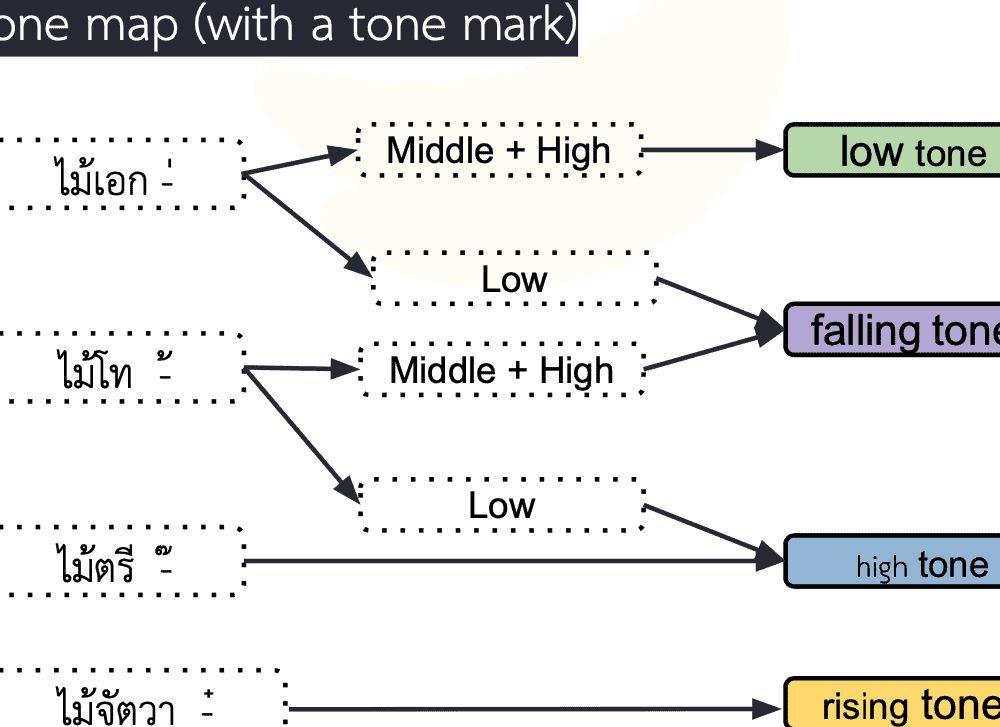One of our readers has decided to share some very useful information about learning Thai, specifically about how to recognize tonality in the pronunciation of words. We think you might find his tips helpful.
When you thoroughly learn Thai, you usually have no problem reading. However, there is one small caveat to the Thai language: getting the key right. Once upon a time, I developed a method of getting to know this fascinating language. I memorized the spelling of a word and the corresponding tone. Thailand has developed its own rules for reading, which I didn’t bother to figure out. Now, when I meet an unfamiliar word, I try to just guess the tone.
The national language of Thais is made up of 5 tones. Because of this, you have only a 20% chance of getting the words right. But don’t get upset if you think the science of tone is overwhelming. I’ll teach you how to recognize tonality in Thai.
Try to use our Russian-Thai phrasebook when you communicate with Thais who don’t know English (or just for practice).
In the local vernacular, there are 4 markers – the founders of tonality. Each one does not always reflect a particular tone, but at the same time it minimizes the number of variations available.
Marker I – ้
His name is written as “mai4 toe1”. I memorized it this way: dot with squiggle – Tochka – Mai Tochka – Mai To. The presence of the 1st speech mark in a word means that it is either pronounced in a high pitch or in a descending pitch.
Marker II – ่
The marker name under #2 is written “mai4 ek2.” For myself I understood it by comparing it with the dash above the Russian letter “Y”. I write it down by the chain “Y – Yek – Mai Yek”. When learning Thai on your own, remember that with this dash, the word is pronounced with a low or descending intonation.
Marker III – ๋
Marker #3 is spelled “mai4 dtree1” or plus. I worked on memorizing it by drawing an analogy to a tree. So, as it grows, it increases in size, that is, it gets an increase in length. The English call a tree a “tree. Hence we get Mai Trie. When you notice this speech marker in the Thai word, read it in an ascending tone.
Here I want to warn you of an exception. For example, “noodles” in Thai is written “ก๋วยเตี๋ยว. It would seem that there is no difficulty in reading here, since both tones in the word are ascending. However, the trick to pronouncing the first part of “ก๋วย” is in its descending intonation. The third marker is used to pronounce words that come from the Chinese language.
Marker IV – ๊
Learning Thai with this marker must be done by the method of elimination. The mysterious 4th marker has the form “mai4 ja1 dta1 waa1”. It gives Thai words a high tone.
Read More:- How to get a job as an English teacher in Thailand – tips.
- The Best Online English Schools via Skype – Pros and Cons.
- Full Moon Party – Price Tips Schedule.
- Airbnb – finding and renting private apartments (apartments and houses).
- Tips for buying a motorcycle in Thailand.
- Pattaya day care centers – features, prices, parenting principles.

